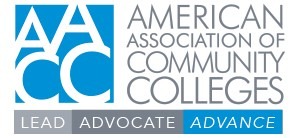When building and implementing a registered apprenticeship program at your college, it is important to understand the role of your state’s policies and legislation, and how these may impact the design and function of your registered apprenticeship program. One of these policies is right-to-work laws. States that have adopted right to work laws have the authority to determine whether workers can be required to join a labor union. In many right-to-work states, labor unions still exist, however workers cannot be compelled to join or maintain union membership as a requirement of their job. While these laws do not have a direct impact on designing or registering a registered apprenticeship program, union involvement in the program does have a significant impact overall.
There are four types of standard documents that can be used when registering an apprenticeship program with the U.S. Department of Labor. These four standards can be viewed as the pathway that must be chosen when registering your program.
- The first option is Individual, Non-Joint. This type of program documentation must be used if your program will only include one employer and will not include an intermediary such as a labor union.
- The second option is Group, Non-Joint. This type of program documentation must be used if your program will include multiple employers and will not include an intermediary such as a labor union.
- The third option is Individual, Joint. This type of program documentation must be used if your program will only include one employer and will also include an intermediary such as a labor union.
- The fourth option is Group, Joint. This type of program documentation must be used if your program will include multiple employers and will also include an intermediary such as a labor union.
The chart below, from DOL, frames these same options in a question and answer format and may be useful in determining the type of program your college will be implementing.
| My program will have… | One employer | Two or more employers |
| No intermediaries | Single Employer Program | Employer Consortia Program |
| One or more intermediaries | Jointly-Managed Single Employer Program | Jointly Managed with Multiple Employers Program |
The chart above, as well as the boilerplate standard documents for each path can be found opens in a new windowonline here. While these federal documents may not be used in all State Apprenticeship Agency (SAA) states, the categories and documentation likely will be similar. If your college is in a SAA state you should contact your state apprenticeship representative before utilizing any of the documentation above.
While your state’s position as a right-to-work or non-right-to-work state does not have direct impact on how you design your registered apprenticeship program, registered apprentices are full employees of their employer. If these apprenticed employees are members of a labor union, your program will be a ‘jointly-managed’ program, involving the labor union in registration and representation of the program.
ECCA Successful Stories and Promising Practices
Colleges and promising practices in Right-To-Work States
opens in a new windowColleges and promising practices in Non-Right-To-Work States
